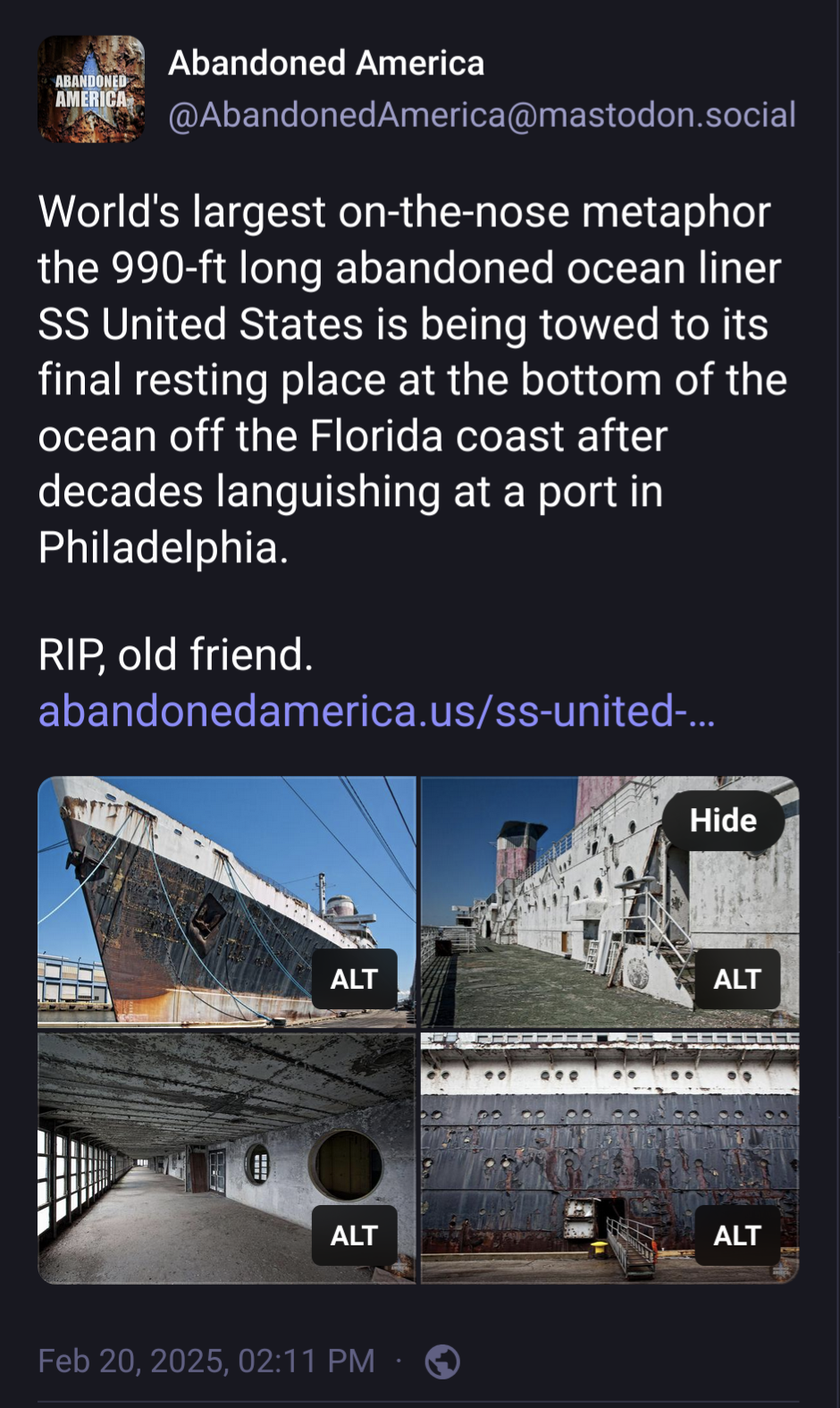this post was submitted on 21 Feb 2025
249 points (97.0% liked)
Microblog Memes
6649 readers
2228 users here now
A place to share screenshots of Microblog posts, whether from Mastodon, tumblr, ~~Twitter~~ X, KBin, Threads or elsewhere.
Created as an evolution of White People Twitter and other tweet-capture subreddits.
Rules:
- Please put at least one word relevant to the post in the post title.
- Be nice.
- No advertising, brand promotion or guerilla marketing.
- Posters are encouraged to link to the toot or tweet etc in the description of posts.
Related communities:
founded 2 years ago
MODERATORS
you are viewing a single comment's thread
view the rest of the comments
view the rest of the comments

It seems ridiculously irresponsible to just sink our old ships when we're done with them.
I dunno, artificial reefs seem like decent way to reuse them. If the metal was worth salvaging seems like the would have. Maybe too labor intensive? https://ocean.si.edu/ecosystems/coral-reefs/when-wrecks-become-reefs
Very cool read! I learned a lot. Let me quote a few interesting passages.
Fish do congregate around wrecks and make them their new homes, but (emphasis mine):
Not to mention pollution potential, even from basic building materials like iron that persist after intentional scrubbing and decontamination:
So, it sounds like these wrecks can become habitats, but they aren't as biodiverse as natural coral reefs and can have other negative consequences. If we've destroyed the natural habitat, then these can be band-aid replacements so the fish at least have somewhere to go. If the natural habitat still exists in an area, then that natural habitat is much healthier without contamination.
They're usually sank in areas that are otherwise uninhabited by corals due to the depth of the water. The wrecks provide surfaces in the light zone which allows corals to grow.
It's entirely new habitat and it provides more breeding sites in the area. Even if it takes wildlife from other areas, the decrease in population in those results in higher breeding rates in those locations due to decreased competition for food and breeding sites. More breeding sites = more breeding and a higher overall population of wildlife over time.
Ecology aside, these sites draw a lot of tourism. They're "shipwrecks" that are in shallow water, often shallow enough that you can experience them while scuba diving, without needing decompression stops. This means that scuba divers can experience wreck diving without the extra complexity of decompression.
There are many of these artificial reefs around Florida and they're very popular dive sites in areas that otherwise would have no similar attractions.
Source: Dated a woman who worked at fish and wildlife, department of marine fisheries and attended the sinking of the Oriskany ( https://www.padi.com/dive-site/united-states-of-america-usa/uss-oriskany/#overview )